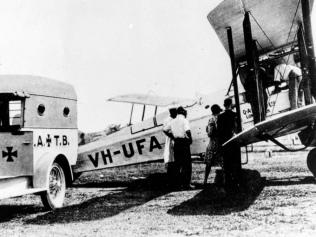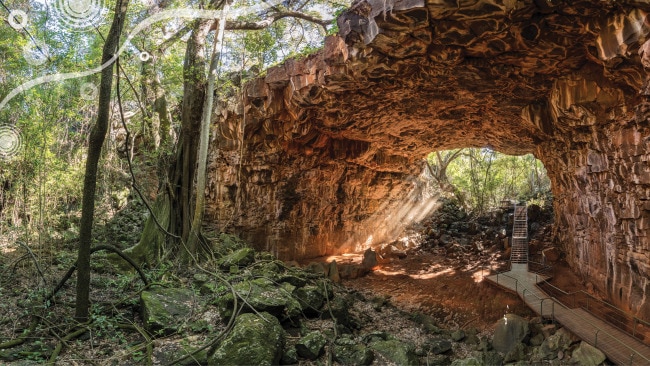Heroes of the revolution
HOW five magnificent men and their flying machine brought medicine to the Outback - and changed the face of history.

HOW five magnificent men and their flying machine brought medicine to the Outback - and changed the face of history.
When young Presbyterian minister the Reverend John Flynn first came to help with missionary work in Outback Australia, the culture shock must have been jarring. Flynn, born in 1880 at Moliagul, just outside of Bendigo, was essentially a child of the city, having been raised mostly in Sydney and Melbourne.
His initial exposure to the often unforgiving na- ture of Australia’s remote regions was through ro- mantic tales about the vast Outback, from when his father’s business partners mounted an unsuccessful venture in the far north. After leaving behind school teaching in 1903 to study theology at Ormond Col- lege in Melbourne, followed by a four-year course in divinity at Melbourne University, Flynn was or- dained as a minister in January 1911.
His first experience of working in remote areas came during his training, helping with the mis- sionary work of other Presbyterian ministers in rural Victoria and South Australia. What he saw there was enough to spark the writing in 1910 of The Bushman’s Companion, “A handful of hints
for Outbackers”, with minister Andrew Barber. The guide was full of first aid advice for everything from bandaging broken bones to treating snake bites, drowning and “fits”, as well as Bible scripture, hymns, the cost of postal services and a calendar. It was dedicated to “the stalwart men who are stoutly fighting, With the heat and the drought, and the dust-storm smiting ...”.
In places where the churches were few and doc- tors even harder to come by, the Companion proved popular. But it wasn’t until his ordination in 1911 that Flynn came face-to-face with the real Outback, at the Smith of Dunesk Mission at Beltana, 500km from Adelaide in the flat, arid country north of the Flinders Ranges. While the residents now had pasto- ral care on their doorstep, there was little medical care for locals or travellers. His work for the church soon took him to Darwin, Katherine, Bathurst Island and Adelaide River, researching life in remote commu- nities, and led him to propose and then head up the Australian Inland Mission to cater to the spiritual and medical needs of “Outbackers”.
The idea of making medical help airborne came years later in 1917, from pilot and medical student Lieutenant Clifford Peel, who wrote to Flynn. Af- ter hearing of too many people left to suffer or die because a doctor could not bridge the vast interior distances in time, Flynn ran a 10-year campaign for an aerial medical service. Vital funds for the idea came from a bequest from long-time supporter Hugh McKay, inventor of the Sunshine Harvester, whose charitable trust survives to this day.
When Flynn met aviator Hudson Fysh, a founder of Qantas, the idea and the money came together in 1927-28 to become an aerial ambulance out of Clon- curry in Queensland, flying 50 missions to 26 destina- tions and treating 225 patients in the first year.
The early pilots were taking genuine risks, flying in fabric-covered timber biplanes and navigating by landmarks and compass alone. If the plane went down, there was no radio to call for help.
The lack of communications technology to operate the service effectively was solved by another Outback hero, Alfred Traeger, with his invention of a pedal-
operated generator to power a radio receiver. By 1929, isolated station dwellers and townsfolk could call on the Flying Doctor to help them in an emergency.
As the service grew and technology improved, Flynn’s aerial ambulance became the backbone of medical care in remote Outback locations. Transistor receivers later replaced pedal radios and the School of the Air was able to piggyback on the renamed Flying Doctor Service network from 1951. When it became the Royal Flying Doctor Ser- vice in 1955, it was being run by a national council out of bases in Broken Hill, Alice Springs and Port Augusta. It did so in the absence of Flynn, who at- tended his last council meeting in 1950 and died of cancer a year later.
The service continued to grow from its humble beginnings, expanding to the modern service, working from 24 aeromedical bases and with 69 aircraft across the nation, and bringing Flynn’s dream of high-quality, rapid response medicine and health care to the bush.
Originally published as Heroes of the revolution


